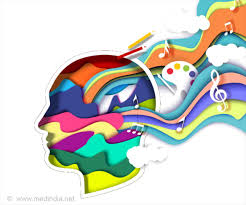November 2024 – Iconic animal characters such as Peter Rabbit, Toad, and Ratty from The Wind in the Willows are more than just entertaining figures in children’s books—they play a significant role in young children’s psychological development, according to a new study.
The research, conducted by Dr. Gray Atherton and Dr. Liam Cross from the University of Plymouth’s School of Psychology, explored how animal characters in stories impact children’s theory of mind skills. These skills include the ability to understand and predict social cues, such as tone of voice, word choice, or facial expressions, all crucial for navigating social interactions.
More than 100 children, aged five to ten, were tested on their theory of mind abilities when presented with stories featuring animal characters versus human ones. The results were striking: while older children typically outperformed younger ones in tests featuring human characters, something unique occurred when animal characters were involved. Year 1 children (around six years old) scored just as well as Year 3 children (around eight years old) in the animal character-based tests—two years their senior.
This surprising finding suggests that animal characters might help bridge developmental gaps, allowing younger children to demonstrate skills typically seen in older peers. The study’s authors argue that these characters provide more than just entertainment—they are instrumental in helping children interpret social and emotional cues in their early development.
In the Journal of Experimental Child Psychology, Dr. Atherton and Dr. Cross noted that both human and non-human characters play essential roles in fostering children’s understanding of the world around them. “Our findings show that both types of characters are important at different stages in a child’s development. Understanding how they influence social and cognitive growth could have a major impact on how we design early childhood education,” said Dr. Atherton.
The study also builds on previous research by Dr. Atherton and Dr. Cross, which has focused on how children with autism and learning difficulties can benefit from educational and social tools, such as board games and targeted learning strategies. Moving forward, they plan to explore whether their findings could be used to develop tailored support for children with autism, helping them thrive in educational settings.
Dr. Cross added, “In our past work with teenagers, we’ve seen how tasks involving animal characters can allow autistic individuals to perform just as well as their non-autistic peers. We hope to investigate this further to better support children at a crucial stage in their development.”
This research underscores the valuable role that animal characters play not only in entertaining young readers but also in shaping the cognitive and social skills that are crucial for their growth.
For educators and parents, the study offers insights into how children learn and develop in ways that could transform early childhood education practices.
Source: University of Plymouth
Journal Reference: Atherton, G., et al. (2024). The Wind in the Willows Effect: Does Age Affect Human versus Animal Faux Pas Recognition? Journal of Experimental Child Psychology.









